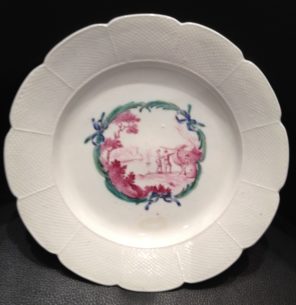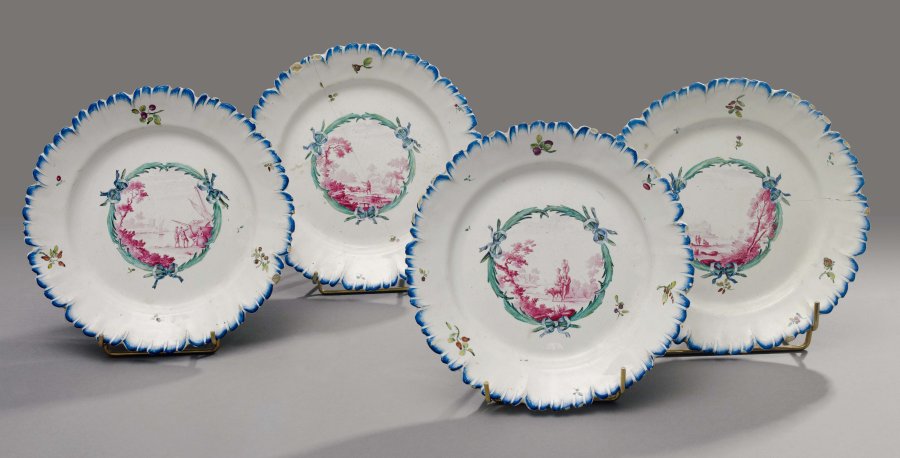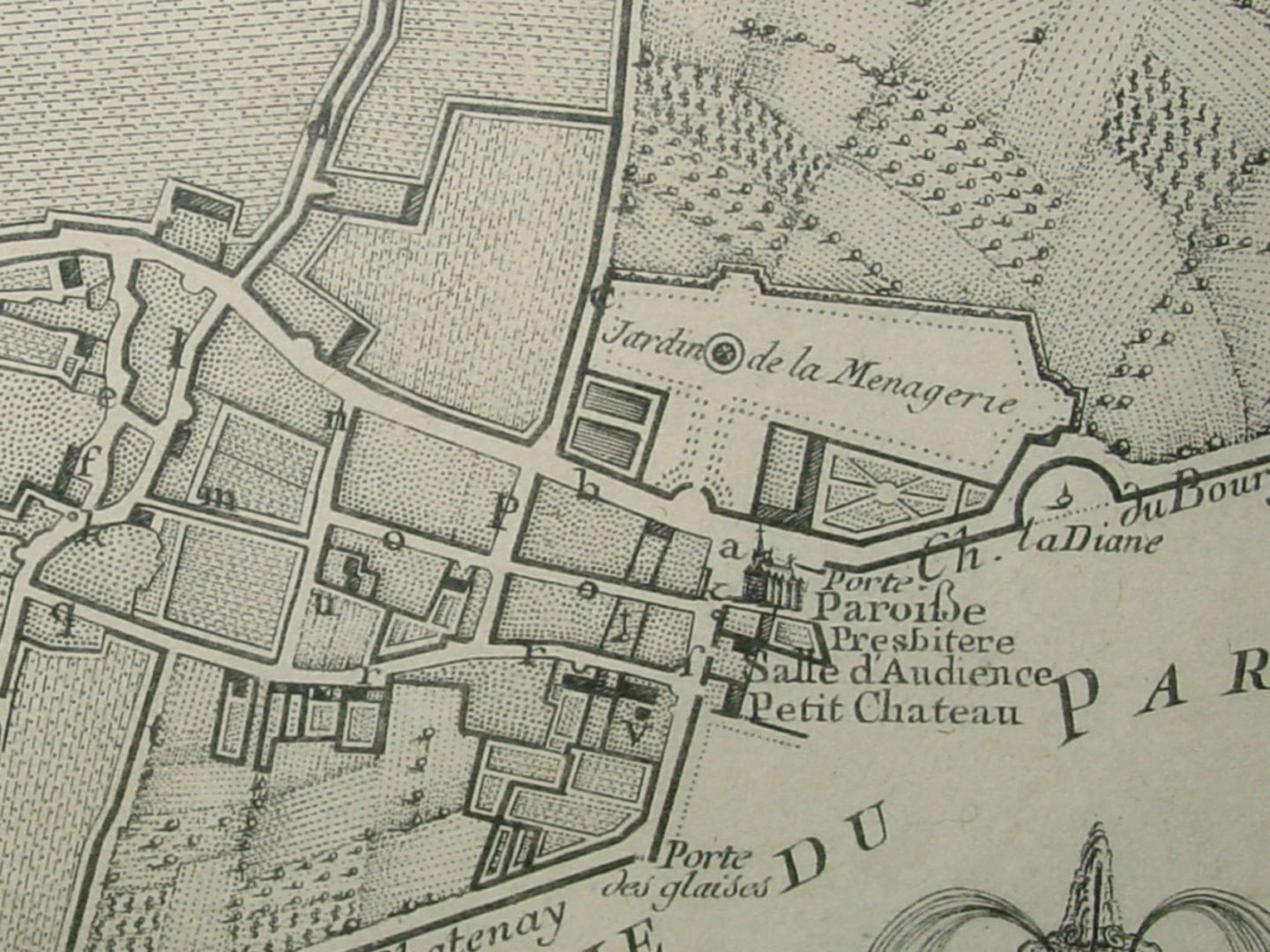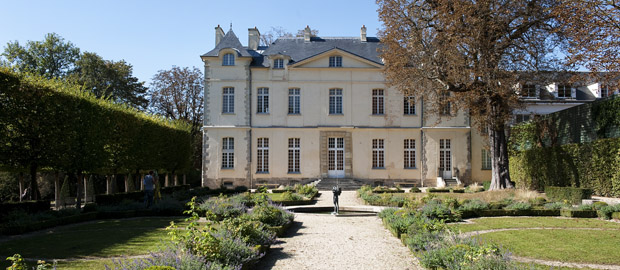c. 1766-68, with a notched edge highlighted in blue, decorated with a scene in camaïeu rose showing figures near a boat, set in a cartouche outlined with greenery and blue ribbons (see three others in 1b). Diam. 23.5 cm. Photo: Pierre Bergé & Associés, Paris
c. 1766-68. By this time these two managing partners were openly making porcelain since the royal monopoly on porcelain production held by Vincennes was no longer being enforced.(i)
The similarity of the decoration on both pieces points to the likelihood that the porcelain example also dates to this first period of Duvivier’s employment at Sceaux. In addition to his very fine bird subjects he was also encouraged to paint maritime scenes of this kind – landscapes with figures standing near rivers, estuaries or harbors.(ii) Some are reminiscent of the Dutch landscape scenes that he painted in puce while later working for Loosdrecht and The Hague (c. 1780-84).
You might be wondering whether there are traces of the manufactory today in Sceaux? I am not aware of any archaeological excavations that have unearthed sherds or other objects identified with the faience and porcelain manufactory or with Duvivier. But there is at least one surviving building connected to its past.
4 The “Petit Château,” built
c. 1661, is one of the oldest buildings still standing on the Sceaux grounds today. It is three doors down from the church Saint Jean-Baptiste (next to the word ‘Paroiße’ on the map at left), where Duvivier’s daughter was baptized in 1775 during his second stay in Sceaux (see Footsteps, pp. 83-87).
So today visitors are at least able to admire the exterior of a historic building where Duvivier and his colleagues carried out their task of decorating Sceaux faience and porcelain.
2b Detail of the porcelain plate. Photo: Christophe Perlès, Paris
__________________________________________________________________________
Notes
(i) See C. Jacob-Hanson, In the Footsteps of Fidelle Duvivier, pp. 17, 41 (note 27).
(ii) See other Sceaux examples in Footsteps, pp. 26-28.
(iii) Quoted in the exhibition catalogue by George Poisson, Maddy Ariès, Christian Gautier, Christian Béalu, and Jacques Bastian, Sceaux–Bourg-la-Reine. 150 ans de céramique de collections privées aux collections publiques (Christian Gautier, Syndicat d’Initiative, 1986), pp. 22-24 (my translation). Sketched plans of the original manufactory grounds are shown and explained in two issues of the Bulletin des Amis de Sceaux – nouvelle série, n° 3, 1986, p. 17, and n°4, 1987, p. 20 (these articles can be viewed online –
http://amis-de-sceaux.org/wp-content/plugins/page-flip-image-gallery/popup.php?book_id=18
http://amis-de-sceaux.org/wp-content/plugins/page-flip-image-gallery/popup.php?book_id=19 )







